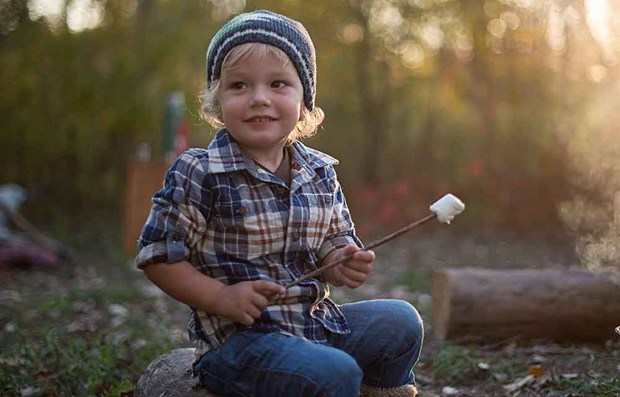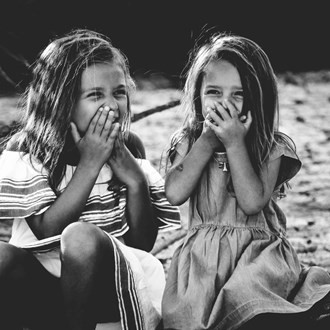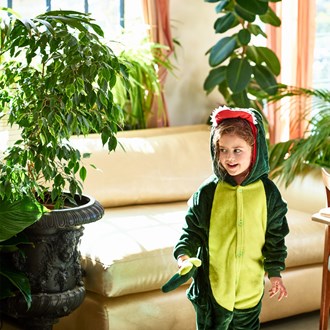Camping first aid myths: what you need to know before the long weekend

Old wives’ myths and tales can make a bad situation worse.
By Practical Parenting
April 13 2017
Easter is the perfect opportunity for families to escape the city, and campgrounds across the country will, no doubt, be abuzz this long weekend.
But spending time with mother nature can be daunting for families when it comes to your child’s safety. Bumps, cuts and scrapes are likely to happen, especially during a competitive Easter egg hunt!
However, when it comes to identifying whether an injury requires a little TLC or more serious attention, things can get a little complicated.
Old wives’ myths and tales can also make a bad situation worse. For example, have you been told to apply butter to a burn from the campfire? Or, suck out the venom from a snake bite? Think again!
What you might believe is an easy solution to a camping injury might not be medically correct, and can even cause further harm.
Before heading off on your holiday, it’s important to be educated and prepared, especially in remote areas where professional help is not easily accessible.
Anthony Hasphall, St John Ambulance Victoria’s Training Manager, shares his First Aid tips for parents on the biggest First Aid myths he’s heard during his years delivering First Aid advice and training. He also stresses that in any First Aid situation, it’s important to follow DRSABCD first.
BEE STINGS
Myth: Squeeze out a bee sting
Signs: Puncture mark, swelling or redness to the area
Symptoms: Pain and discomfort
Truth: While it’s important to remove the sting as fast as possible as the stinger itself continues to release venom into the skin the longer it is there, squeezing will simply release more venom, causing further pain.
What to do: If your child gets stung by a bee, remove the sting as quickly as possible by either brushing, flicking or scraping it. Apply a cold compress or ice pack to help relieve swelling and pain.
DEHYDRATION
The myth: Dehydration is uncomfortable but not very serious
Signs: Dry mouth, eyes and lips
Symptoms: Headaches, light headedness, small amounts of dark urine, muscle cramps
Truth: Dehydration can be very dangerous if left untreated, and sometimes requires hospital attention. If you’re experiencing any early symptoms, these should be acted on promptly, especially where young children are concerned.
What to do: If your child is showing signs of dehydration, ensure they sit down and drink plenty of water. An oral rehydration solution is also a good idea if available. However, this risk can be completely avoided with the general rule of thumb: always ensure you have a bottle of water and drink regularly from it.
SNAKEBITE
The myth: The venom needs to be sucked out of the bite.
Signs: Puncture mark, bleeding or scratch marks are among signs that may be present.
Symptoms: Headache, impaired vision, nausea, vomiting, diarrhoea, breathing difficulties, drowsiness, faintness, and problems speaking and swallowing may develop within an hour.
Truth: Incorrect - venom cannot simply be sucked out from one area. This method is unhygienic and should never be used.
What to do: Keep your child as calm and as still as possible. Apply a pressure bandage from fingers to armpit if the bite is on the arm or on the toes to the groin if the bite is on the leg. Ensure you immobilise them, as keeping still will minimise the spreading of venom through the body.
CAMPFIRE BURNS
The myth: Slather on butter, toothpaste or aloe vera gel to cool the burn.
Signs: Reddened skin, blistering.
Symptoms: Blistering or peeling.
Truth: While burns can be highly uncomfortable, the best way to treat burn is to soak or apply a sponge to it in cool water. We don’t recommend using butter, any types of lotions, creams or oils.
What to do: If your child sustains a burn while camping, ensure they soak the burn in in cool water for 20 minutes. Remove all jewellery and clothing from the burnt area unless it’s stuck to the burn and prevent any further infection by covering the burn with a loose, non-sticking dressing.
Final advice:
As with all holidays, it’s important to have a stocked up First Aid kit nearby. You’d be surprised how often they can come in handy, even just for some tape or antiseptic wipe. You can stock up here.






